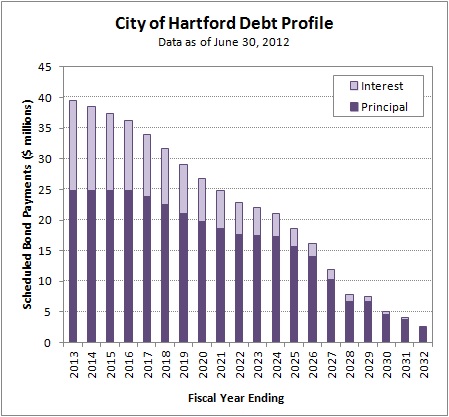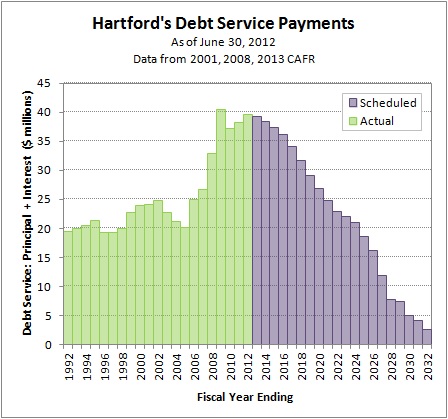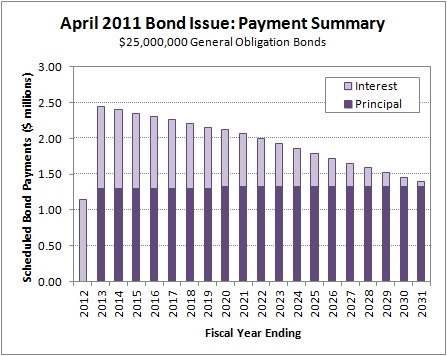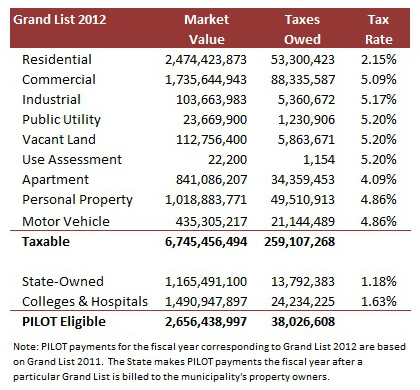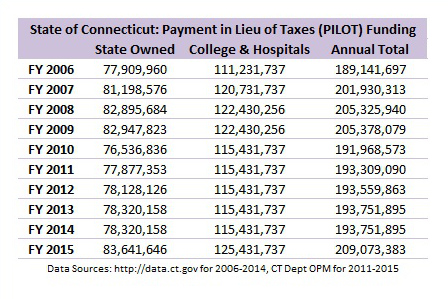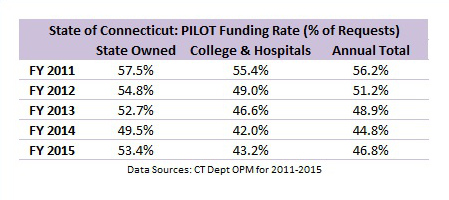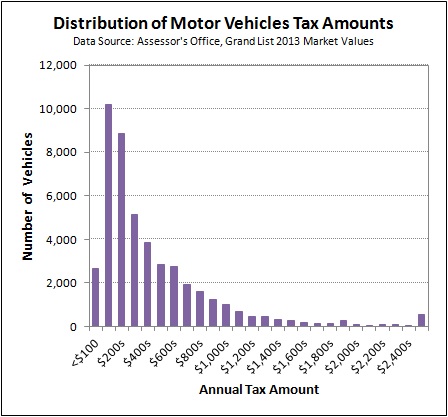The Hartford City Council has held numerous public hearings and committee meetings in an effort to better understand the Downtown North proposal. They have dramatically increased the amount of information available to the public.
I’ve followed the discussion, and see many positives to the proposal. Yet, I still find myself opposed to the project. I see building out the site as a luxury, and as a distraction.
Hartford has a more important priority right now; restructuring municipal finances and operations to put the City on a sustainable path. My primary concern is that if Downtown North is approved that it will be much more difficult to make the hard choices that a restructuring will require.
There are positives to the proposal, and the first phase of Downtown North seems likely to achieve meaningful goals. There is a good chance that the main benefits would be realized. Baseball would expand and diversify the City’s entertainment options. A grocery store would address the food desert in the northern neighborhoods and provide a new option for the increasing number of Downtown residents. Main Street would be transformed north of the highway. Clay Arsenal would be reconnected with Downtown. There would be more construction jobs. Hopefully phase one would also create momentum that would ensure the entire project is completed.
The Downtown North business case for the City is approximately revenue neutral. The business case has been portrayed as a positive, though I see it as a negative. The Administration is projecting that the City can achieve the benefits listed above without increasing the property tax. The ancillary development can create new revenue that will more-or-less offset the expected costs of the land preparation, stadium construction, and public infrastructure improvements.
Unfortunately, Hartford is in a position where it has to do better than financially treading water. Increasing expenses at the same pace as revenues doesn’t improve the City’s financial position.
Other criticisms of the proposal also resonate.
Stadiums, in general, are regional assets. They provide entertainment to all of the surrounding towns while generally losing money. Asking the City of Hartford, a financially stressed municipality with very low median income residents and a highly taxed business community, to take on the facility alone doesn’t seem appropriate.
The financial model of professional baseball, specifically, has regions paying for the privilege of hosting a team. Again, it does not seem appropriate for the City of Hartford to subsidize this entertainment option on behalf of the entire region.
There has been virtually no discussion about how the XL Center is impacted by the proposed baseball stadium. Hartford needs to ensure that the XL Center, which is the more important of the two sports venues and is already funded at the state/regional level, continues to be successful and remains a top priority.
When looking at the big picture, Downtown North seems like an acceptable project, but not a great one. Choosing to move forward will not expose the City to an unreasonable amount of risk, and would bring some positives.
However, committing time and money to Downtown North will distract from a higher priority effort that the current political leaders have already agreed is necessary.
Approving Downtown North will send conflicting messages to stakeholders that will need to make concessions in the form of higher taxes, fewer services, or fewer benefits as the City works to find a sustainable path.
The best course of action is to put Downtown North on the back burner until the City has an opportunity to reorganize.
It could take years to get Hartford’s proverbial house in order, and at that point the environment may be different. The numerous early-stage Downtown construction projects will be much further along, if not complete. The influx of new residents may even change the priorities for the Downtown North site.
Hartford needs to set sustainable municipal goals. Hartford needs to agree on primary strategies for working towards those goals. Hartford needs to organize and focus its operations around the goals and strategies.
Once those steps are complete, the City will be in a much better position to consider proposals like the one currently on the table for Downtown North.
